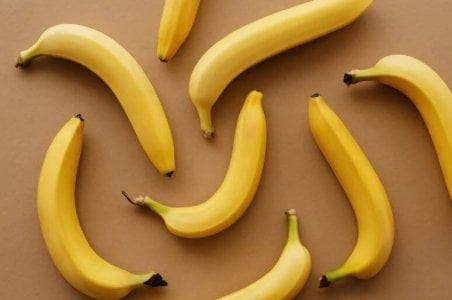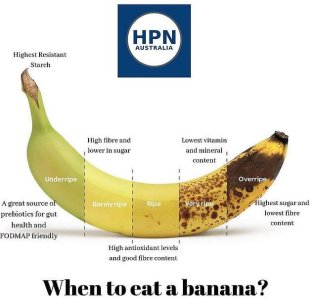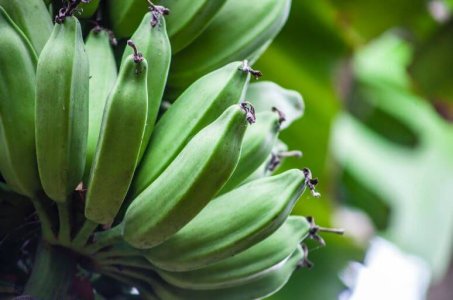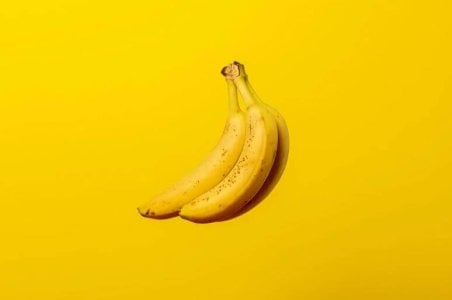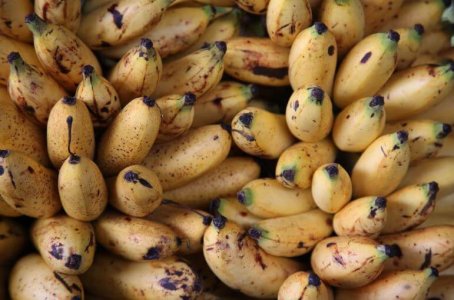Do you know what that brown spot on your banana REALLY means? Supermarket employee reveals the truth!
- Replies 3
For many of us, bananas are a staple in our diets. Not only are they delicious, but they are one of the healthiest snacks around. But do you really know all that they have to offer?
Understanding how to identify the different stages of a banana can help you maximise its health benefits, and luckily, one Woolworths employee is here to shed some light on the different stages of a banana and recommended the various meals they should be used in.
For many of us, bananas are a staple in our diets. Not only are they delicious, but they are one of the healthiest snacks around.
And Woolies team member Liam, who is quite popular on TikTok for his Woolworths-related content, shared the different stages of a banana and what you should be doing with each in the kitchen.
‘This is how you can know what you can do with your banana,’ Liam said in the video.
Diving right into it, Liam said that the green bananas are perfect for salads. ‘It will yellow up in two to three days,’ he added.
‘Yellow means it’s perfect to eat and works well in smoothies,’ he explained.
Although many people do tend to avoid eating bananas when they’ve developed little brown spots, Liam said bananas that have turned a bit brown are ‘good to cook with’ and for barbecues.
He added that you can make banana bread with overripe bananas, and this stage of a banana is perfect for baking.
You can watch Liam’s video below:
It’s also worth noting that bananas have different nutritional values at various stages.
Australian sports dietician Ryan Pinto shared the different benefits of eating bananas at each stage – and why eating an overripe banana may not be the best idea.
‘The best way to understand how the health of a banana can change is by investigating what really happens to them internally over time,’ Ryan wrote on his Instagram account and attached a photo to his post.
According to Ryan, green bananas are ‘youthful, low FODMAP, and full of starch’.
FODMAP stands for ‘fermentable oligosaccharides, disaccharides, monosaccharides and polyols’, which are short-chain carbohydrates that cannot easily be absorbed by our small intestines.
He added that the starch in green bananas is ‘resistant starch’ which means that they make the digestive system work a little harder. This is also the reason why green bananas make us feel so full after eating them.
‘However, the starch in green bananas can also make you feel gassy or bloated. The starch content in green bananas contributes to their waxy texture,’ the dietician explained.
Bananas are gaseous, as studies have pointed out. Bananas, like most fruits, produce and react with ethylene, which is an airborne hormone that signals the start of its ripening.
Oxygen gets into the fruit through tiny holes called stomata, and this is also how a banana’s brown spots form and spread. More details about why bananas develop brown spots can be read here.
Ryan suggested going for green bananas if you want to eat foods that rank low on the glycemic index.
‘Eventually, your body will break this starch down into glucose. This way, green bananas will raise blood sugar levels slowly. The trade-off here is taste. Green bananas can be bitter, as they contain less sugar in every bite,’ he stated.
‘Say goodbye to starch and hello to sugar. This gradual switch results in a softer and sweeter banana,’ Ryan claimed before adding that the ripe yellow stage is higher on the glycemic index – but they are easier to digest.
‘With less starch to break down, your digestive system will soak up the nutrients quicker,’ he added. However, there’s always micronutrient loss as bananas go through the ripening process.
‘To make up for this, yellow bananas are more developed when it comes to antioxidants.’
Spotted or very ripe bananas, on the other hand, often exhibit brown spots on their flesh and are much sweeter, which is due to their higher sugar content. ‘Not only do brown spots show that a banana has aged, but they also indicate how much starch has been converted to sugar,’ Ryan said.
According to dietician Dr Sarah Schenker, yellow bananas have more health benefits than their green counterparts. She said: ‘Bananas contain several compounds, such as carotenoids, which are linked to eye health and cancer prevention, that become more available when the banana ripens.’
She shared that the greater number of brown spots a banana has, the more sugar it contains. Those brown spots produce a substance that fights abnormal cells and boosts our immunity against cancer. You can read more about this in detail here.
Lastly, Ryan explained that brown bananas are ‘practically all sugar now’.
‘Just as the starch has broken down into sugar, chlorophyll has taken a new form as well. This breakdown of chlorophyll is the reason why antioxidant levels increase as bananas age,’ he claimed.
He added: ‘All bananas are around 100 calories, low in fat and are rich sources of potassium, vitamin B6, vitamin C and fibre.’
 Are you going to make these banana tips a part of your grocery shop routine? If you have any banana hacks or recipes, share them with us – we’d love to hear what you have to say!
Are you going to make these banana tips a part of your grocery shop routine? If you have any banana hacks or recipes, share them with us – we’d love to hear what you have to say!
Understanding how to identify the different stages of a banana can help you maximise its health benefits, and luckily, one Woolworths employee is here to shed some light on the different stages of a banana and recommended the various meals they should be used in.
For many of us, bananas are a staple in our diets. Not only are they delicious, but they are one of the healthiest snacks around.
And Woolies team member Liam, who is quite popular on TikTok for his Woolworths-related content, shared the different stages of a banana and what you should be doing with each in the kitchen.
‘This is how you can know what you can do with your banana,’ Liam said in the video.
Diving right into it, Liam said that the green bananas are perfect for salads. ‘It will yellow up in two to three days,’ he added.
‘Yellow means it’s perfect to eat and works well in smoothies,’ he explained.
Although many people do tend to avoid eating bananas when they’ve developed little brown spots, Liam said bananas that have turned a bit brown are ‘good to cook with’ and for barbecues.
He added that you can make banana bread with overripe bananas, and this stage of a banana is perfect for baking.
You can watch Liam’s video below:
It’s also worth noting that bananas have different nutritional values at various stages.
Australian sports dietician Ryan Pinto shared the different benefits of eating bananas at each stage – and why eating an overripe banana may not be the best idea.
‘The best way to understand how the health of a banana can change is by investigating what really happens to them internally over time,’ Ryan wrote on his Instagram account and attached a photo to his post.
According to Ryan, green bananas are ‘youthful, low FODMAP, and full of starch’.
FODMAP stands for ‘fermentable oligosaccharides, disaccharides, monosaccharides and polyols’, which are short-chain carbohydrates that cannot easily be absorbed by our small intestines.
He added that the starch in green bananas is ‘resistant starch’ which means that they make the digestive system work a little harder. This is also the reason why green bananas make us feel so full after eating them.
‘However, the starch in green bananas can also make you feel gassy or bloated. The starch content in green bananas contributes to their waxy texture,’ the dietician explained.
Bananas are gaseous, as studies have pointed out. Bananas, like most fruits, produce and react with ethylene, which is an airborne hormone that signals the start of its ripening.
Oxygen gets into the fruit through tiny holes called stomata, and this is also how a banana’s brown spots form and spread. More details about why bananas develop brown spots can be read here.
Ryan suggested going for green bananas if you want to eat foods that rank low on the glycemic index.
‘Eventually, your body will break this starch down into glucose. This way, green bananas will raise blood sugar levels slowly. The trade-off here is taste. Green bananas can be bitter, as they contain less sugar in every bite,’ he stated.
‘Say goodbye to starch and hello to sugar. This gradual switch results in a softer and sweeter banana,’ Ryan claimed before adding that the ripe yellow stage is higher on the glycemic index – but they are easier to digest.
‘With less starch to break down, your digestive system will soak up the nutrients quicker,’ he added. However, there’s always micronutrient loss as bananas go through the ripening process.
‘To make up for this, yellow bananas are more developed when it comes to antioxidants.’
Spotted or very ripe bananas, on the other hand, often exhibit brown spots on their flesh and are much sweeter, which is due to their higher sugar content. ‘Not only do brown spots show that a banana has aged, but they also indicate how much starch has been converted to sugar,’ Ryan said.
According to dietician Dr Sarah Schenker, yellow bananas have more health benefits than their green counterparts. She said: ‘Bananas contain several compounds, such as carotenoids, which are linked to eye health and cancer prevention, that become more available when the banana ripens.’
She shared that the greater number of brown spots a banana has, the more sugar it contains. Those brown spots produce a substance that fights abnormal cells and boosts our immunity against cancer. You can read more about this in detail here.
Lastly, Ryan explained that brown bananas are ‘practically all sugar now’.
‘Just as the starch has broken down into sugar, chlorophyll has taken a new form as well. This breakdown of chlorophyll is the reason why antioxidant levels increase as bananas age,’ he claimed.
He added: ‘All bananas are around 100 calories, low in fat and are rich sources of potassium, vitamin B6, vitamin C and fibre.’
Key Takeaways
- A Woolworths employee shared the four different stages of a banana, and which meals or dishes they work best in.
- Green, yellow, browning and brown bananas have different nutritional makeup.
- Unripe bananas contain resistant starch, which acts like soluble fibre and escapes digestion.
- All bananas are low in fat and are rich in vitamin sources, such as potassium and vitamin C.

